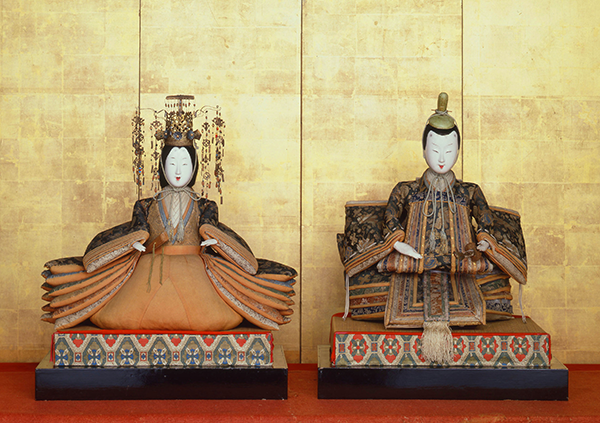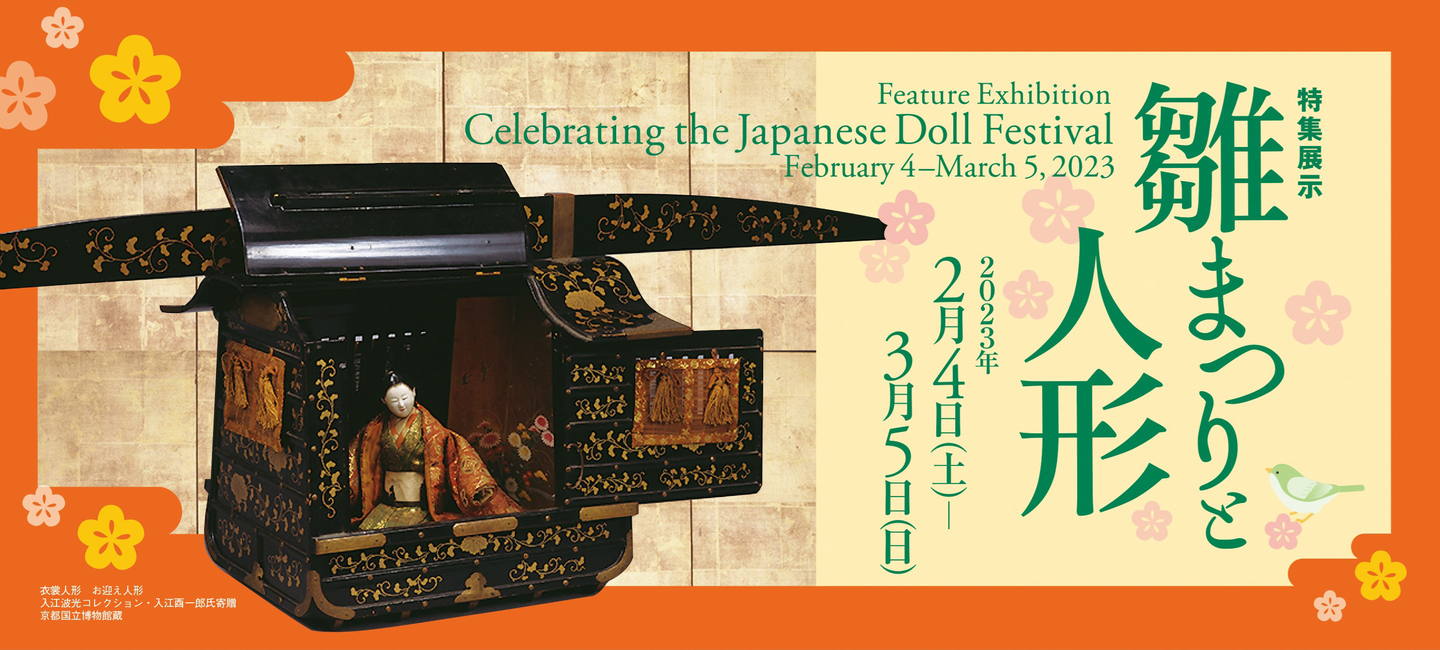- TOP
- Exhibitions
- Feature Exhibitions
- Feature Exhibition: Celebrating the Japanese Doll Festival
General Information
- Exhibition Title
-
Feature Exhibition: Celebrating the Japanese Doll Festival
- Period
-
February 4–March 5, 2023
- Venue
-
Heisei Chishinkan Wing, Gallery 1F-2
- Closed
-
Mondays
- Museum Hours
-
9:30 a.m.–5:00 p.m. (Entrance Until 4:30 p.m.)
- Admission
-
Adult 700 yen University Student
(ID required)350 yen - Admission fee includes admission to all galleries in the Heisei Chishinkan Wing.
- Admission is free for high school students and other youths age 0 – 17, seniors over 70, visitors with disabilities and one caretaker, and for Campus Members (including faculty). Please show ID.
- Admission for school groups: Admission to the Collection Galleries is free for elementary school, middle school, and high school students on school fieldtrips as well as teachers serving as their guides.
Description of Exhibition
The Japanese custom of displaying hina dolls on the third day of the third month began in the Edo period (1615–1868). The Doll Festival is a time when people pray for the health and happiness of girls, but it originated as a day of purification, when the accumulated defilements from the daily lives of actual people would be transferred onto surrogate figurines. Dolls were eventually linked with children’s playthings and came to be displayed formally in the home.
This exhibition traces the history of hina dolls and their display, which at times incorporated elaborate palace structures. In addition, this year’s exhibit uses costume dolls (ishō ningyō) to consider the themes of human interactions and travel, which are once again becoming a part of our daily lives. We hope that the wide variety dolls in this exhibition, including palace (gosho) dolls and kamo dolls, will open your eyes to Japan’s rich culture of dolls and its development in the ancient capital of Kyoto.

Hina Dolls, Kyōho bina Type, known as Ōuchi bina
Kyoto National Museum







